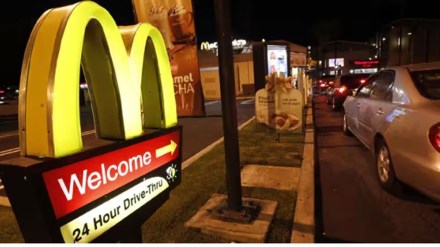Discretionary categories such as fast-food may be feeling the slowdown blues amid food inflationary pressures, but one sub-segment appears to be bucking the trend for now.
Burger sales have outperformed pizza sales for the last five quarters, visible in the same-store sales (SSG) growth numbers of players such as Westlife Foodworld and Jubilant FoodWorks (see chart). The trend is expected to stay for some time as food inflationary pressures remain and consumers increasingly get value-conscious amid a curtailment in non-essential expenditure.
Westlife runs McDonald’s stores in the west and south of India; Jubilant FoodWorks is the master franchisee of Domino’s Pizza in India, Bangladesh, Sri Lanka and Nepal.
Experts attribute the trend to the perception of burgers as driving individual consumption versus pizzas which tend to drive group consumption. Most burger chains such as McDonald’s and Burger King have also pushed combo meals aggressively, positioning them as value-for-money, teaming burgers with french fries, a drink or any other product. This gives a filling experience to the consumer.
A combo meal could come for as low as Rs 150-200 (Rs 179 for McSaver meals at McDonald’s, for instance), going up (in terms of price) depending on what a consumer adds to his or her order. Pizzas, in contrast, will vary in terms of size and topping. A regular-sized veg pizza, for instance, is priced at Rs 99 by Jubilant FoodWorks, though it has dropped the price in recent months to Rs 49-69 under its Pizza Mania offer. The chain is also offering two regular-sized pizzas for Rs 99 to drive sales.
“During inflationary times, consumers take note of every little advantage and disadvantage,” says Sachin Bobade, vice-president, research at brokerage firm Dolat Capital. “Burgers tend to give an in-fill experience that pizzas don’t. Pizzas are also great for family occasions or when friends are meeting over. Burgers can be consumed anytime, anywhere. You don’t need a group. These attributes work in its favour,” he says.
A look at the fast-food market in India shows that burgers and sandwiches as a category constitute 31% of the quick-service restaurant (QSR) segment, while pizzas make up around 28%, according to industry estimates. While the gap is not huge, the growth rate of burgers and sandwiches is higher (19-22%) than pizzas (13-18%), experts say.
“The opportunity for all-day, individual consumption is bigger in my view than consumption of comfort food such as pizzas in groups. Which could explain why this divergence in burgers and pizza sales is showing up,” Harminder Sahni, founder and MD at Gurugram-based Wazir Advisors, says.
Jubilant FoodWorks is counting on occasions such as the upcoming Cricket World Cup to drive sales, when group consumption is expected to pick up as people congregate in one place to watch matches.
The chain, which is the country’s largest food-service operator, has set the ball rolling by launching a new spicy range, which includes four pizzas, for Rs 179, Sameer Khetarpal, CEO and MD, Jubilant FoodWorks, said during the company’s recent investor call.
The company has also increased consumer engagement, notably, online, with downloads of the Domino’s Pizza app at an all-time high of 10 million, Khetarpal said.
Speaking to FE, Akshay Jatia, executive director, Westlife Foodworld said that same-store sales growth in the June quarter was led by product innovations and platforms such as the McSaver Value.
“In the medium term, the focus will be on driving meals, providing an omni-channel experience and ensuring cost leadership,” Jatia said. Westlife has a total of 361 restaurants across 58 cities at the end of the June quarter. Jubilant FoodWorks, on the other hand, has a total of 1,838 restaurants across 394 cities.
